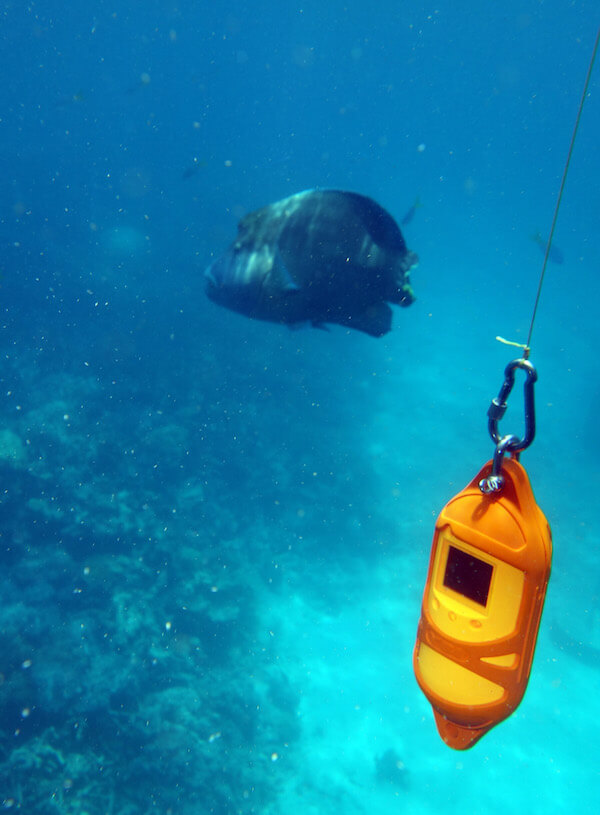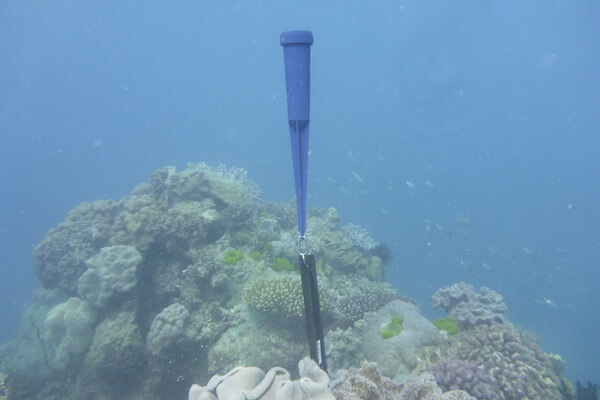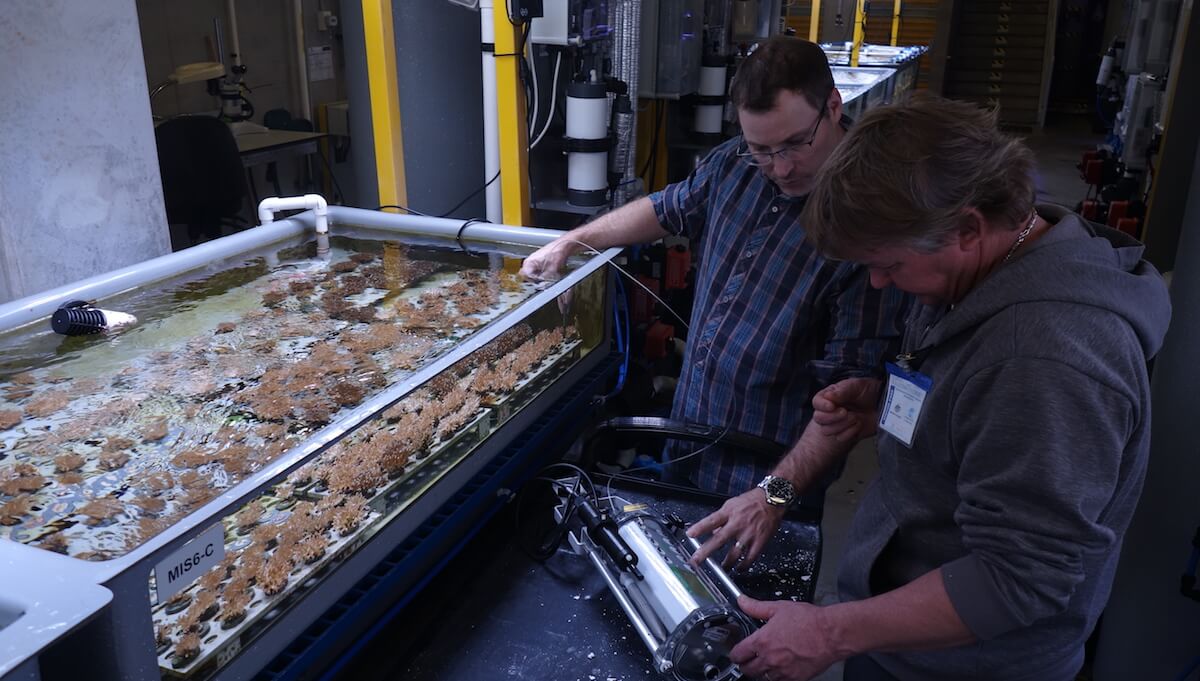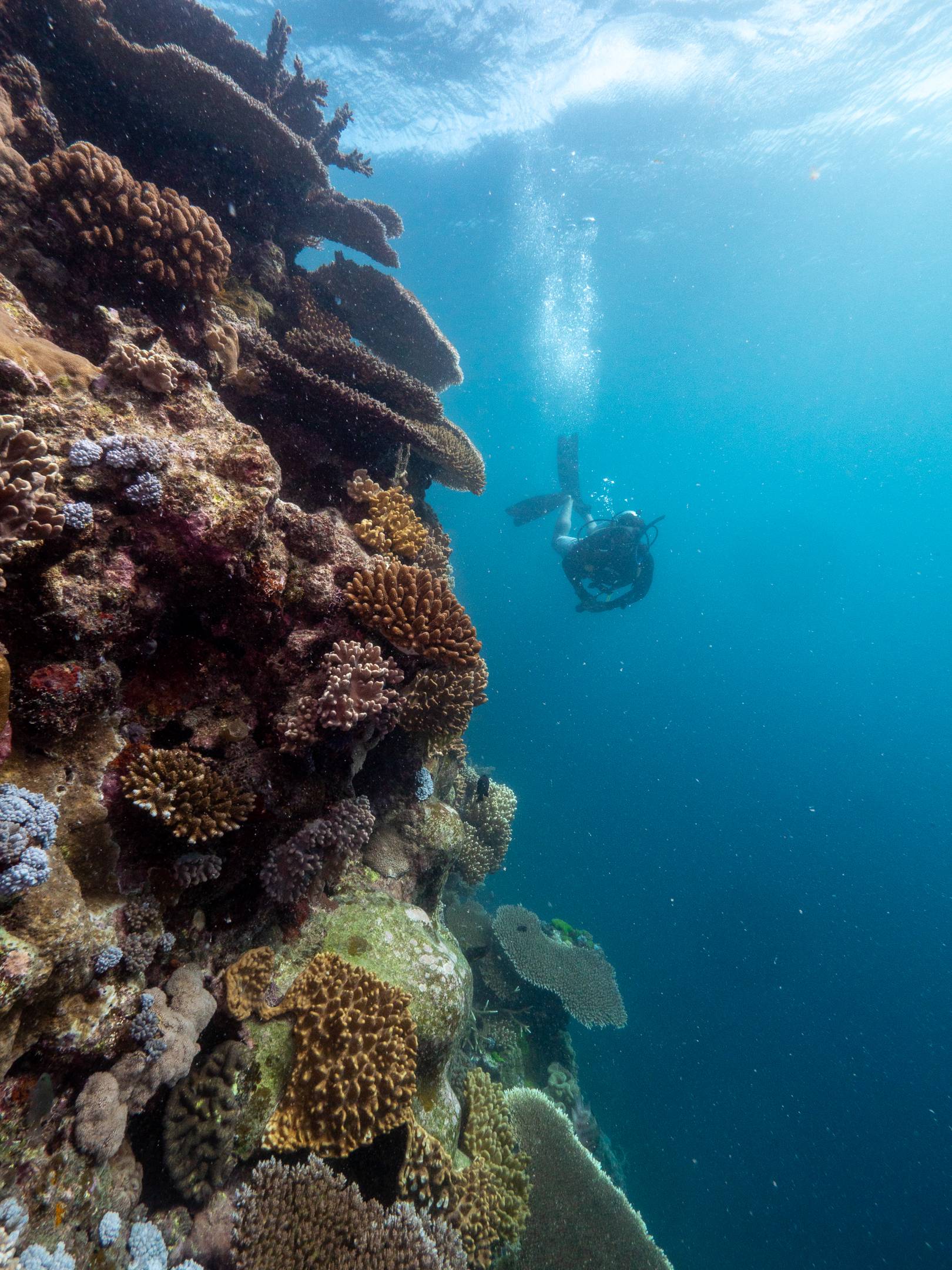Reef Havens Initiative
Reef Havens is an Australian Government-funded initiative to explore technologies to prevent bleaching or assist recovery in mass bleached coral reefs in areas of high biodiversity and socio-economic value.
Coral Bleaching
Coral bleaching is a stress response to an external environmental condition, which sees hard corals and some soft corals lose their colour and appear white. Stressors can include sudden spikes or drops in temperature, prolonged high temperatures (days above average temperatures or heat stress days), rainfall or low salinity due to flood plumes and high light levels. The majority of hard corals and ~55% of soft corals have a symbiotic relationship with a photosynthetic single celled organism commonly referred to as zooxanthellae. Once acquired by a coral polyp, the zooxanthellae reach high densities within a polyp’s tissues and attribute to the coral’s base colour (brown to greenish hues) and more importantly greater than 95% of the coral polyp’s nutrition/energy. A coral reef is a complex three-dimensional carbonate structure made possible by the symbiotic relationship between the polyp and its photosynthetic symbionts.
External stressors to corals can cause the zooxanthellae to make toxic by-products (instead of beneficial sugars) that results in the coral polyp expelling the symbiotic algae. Expulsion of the zooxanthellae causes the corals to lose their base colour (brown/green) and appear pale, fluorescent or totally bleached white. The breakdown in this relationship also sees coral lose their main nutritional source and subject them to a weakened state. If the external stressors do not subside the corals begin to starve and this may lead to mortality in some cases. However, if the external stress does subside, the symbiotic relationship is restored, corals regain their colour and move to a healthier state.
Photo Credit Fredrik Naumann/Panos Pictures
The patchiness, a difficult story to tell
Reports of the 2016 and 2017 mass bleaching events in the GBR were poorly received by the global audience, due to the conflicting results and the different narratives being told by scientists, resource managers and the marine tourism industry.
The patchiness in bleaching severity and death or recovery of corals may be due to a mix of biological and physical factors that occur at all reef scales. Corals differ biologically even at the species level in terms of their symbiont relationship and also how they are equipped to deal with thermal stress. The main physical factors are temperature, light and flow.
Understanding how individual biophysical components influence coral bleaching resistance could allow us to answer some of the questions below and aid in identifying climate refuges for corals.
- Why different habitats of an individual coral reef recover differently from a bleaching event?
- Why two colonies of the same species bleach, but one dies and the other recovers, or even one colony bleaches and the other does not?
- Why a portion of an individual bleached colony recovers and lives, but the remainder dies?
Identification of the main drivers influencing coral bleaching in different environments also allow for developing manual interventions such as restoring water mixing, shading or cloud brightening.


Aims of the Reef Havens Research Project
- Using a variety of current and temperature flow measuring instruments around a coral reef to evaluate and predict the physical conditions associated with coral bleaching and recovery.
- Measure coral stress in a variety of coral species (including tolerant and non-tolerant corals to bleaching).
- Design, implement and evaluate a water mixing experiment to investigate whether restoring normal water column mixing and/or flow – which has failed due to local weather and climate change – can alleviate thermal stress in corals.

Key Findings So Far
During at least some bleaching events in the Great Barrier Reef (e.g. the mass bleaching event of 2017), periods of low winds cause normal wind-driven mixing of the water column to fail. Every day the sun heats the surface waters, and normal night-time cooling processes (mixing) do not occur. As a result the surface waters become hotter and hotter each day, while deeper waters remain at their normal temperatures or sometimes even get cooler. During such conditions we have measured temperature differences of up to 2 °C between the surface and 20 m depth, and 4 °C between the surface and 40 m depth. These few degrees could make a real difference to shallow corals during bleaching events caused by failure of normal mixing.
Could restoring failed mixing potentially improve outcomes for shallow corals during bleaching weather, at the scale of a reef tourism site? GBR Biology and Reef Magic is partnering with research institutions to investigate.



